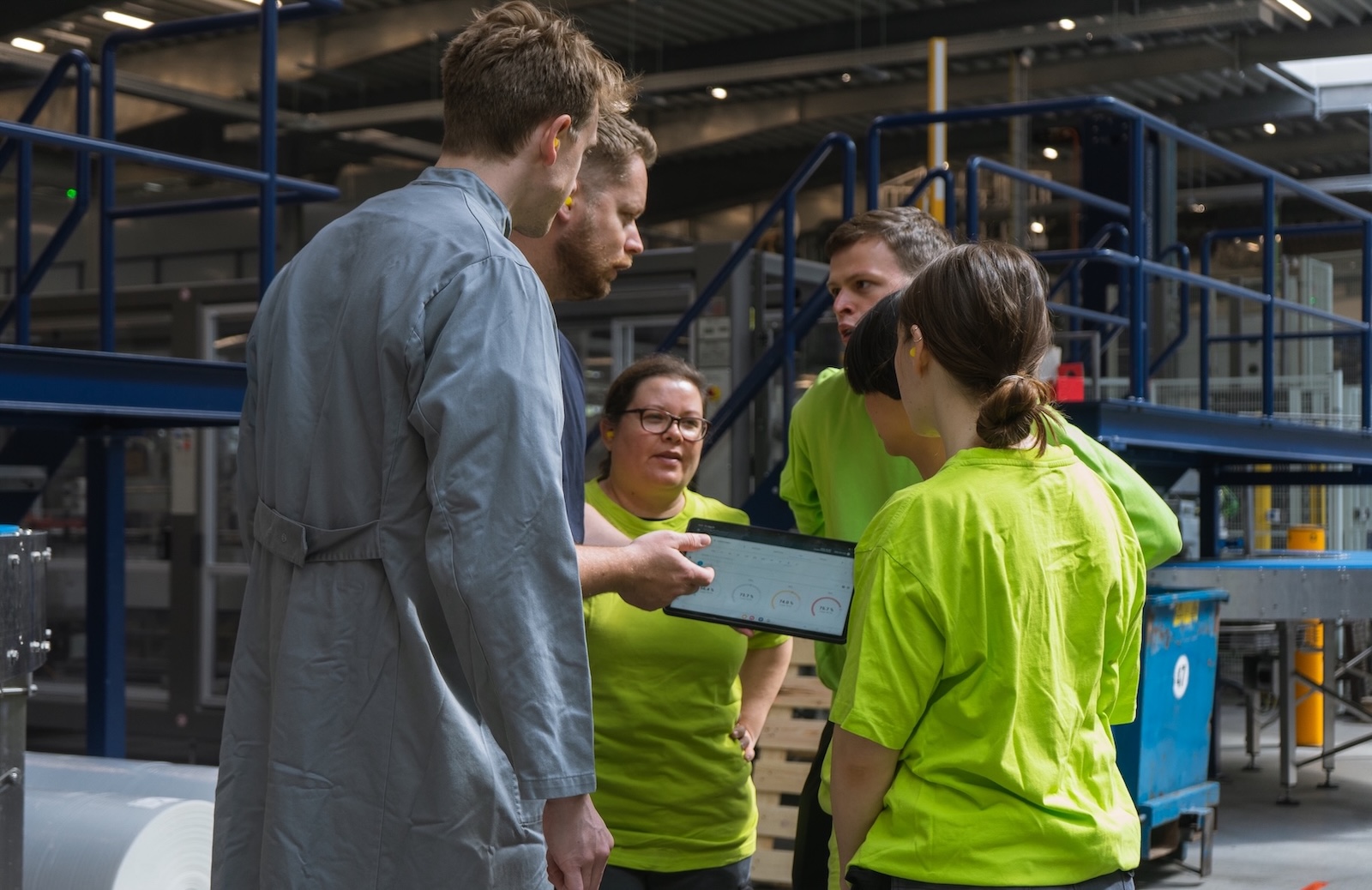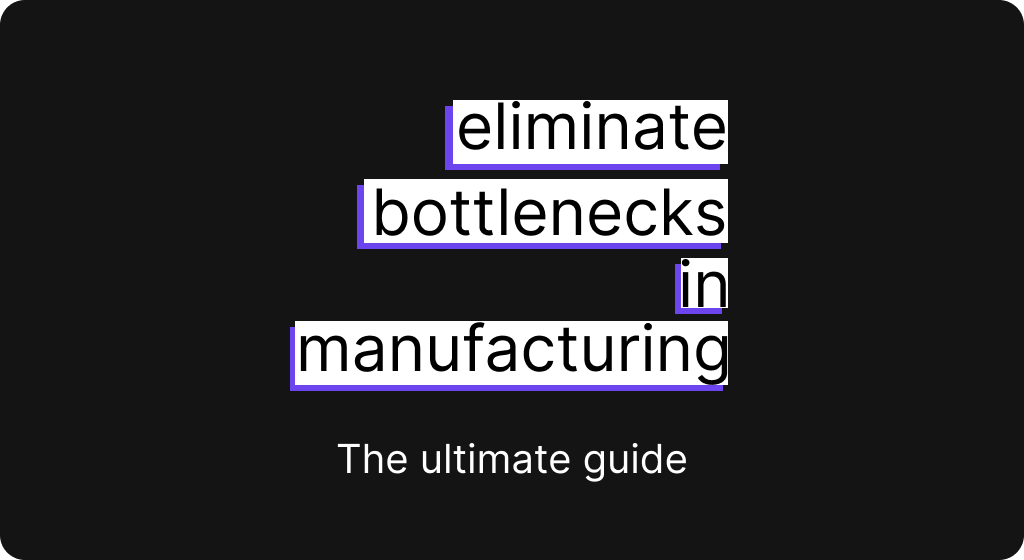The four common traits of top performers
Discover the four traits that set top-performing manufacturers apart, why they work, and how you can put them into practice.

Earlier this year we co-hosted a webinar with LNS Research to dig into a simple question: what are the most productive manufacturing companies doing that the rest are not?
The session was hosted by our own Zak Ostas and Niels Andersen, Principal Analyst and Research Director at LNS Research. Niels shared years of research on what LNS call “the Pathfinders”, the manufacturers that consistently out-perform their competition in productivity. His team has found that these leaders are not only more efficient, but also far more resilient.
Compared to their peers, Pathfinders show 36 percent higher operating margin, 34 percent higher throughput, 32 percent higher capacity utilization, and 22 percent higher uptime.
.png)
When we looked closer at what drives these gains, there were four traits that stood out. To our surprise, what we found wasn’t particularly abstract. What the leaders have in common are four practical, repeatable traits that any ambitious manufacturer can and should adopt.
Make things, differently
Pathfinders treat their operations as a competitive weapon. This becomes clear when talking to the top performers. They’re more than happy to share what they're doing on the IT side, for example. But once they’re asked about what is happening in manufacturing, they are much more secretive. The products are unique, but the processes that make them are even more special. De Kuyper, the Dutch distiller, is a good example. They approached us with the goal of getting a clearer, real-time view of production.
We supported, and as a result, they managed to tighten stop-cause registration, improve traceability checks, and support quality control on the line. When your process has signature steps and tight tolerances, getting that clarity makes all the difference. It protects what makes the product distinctive and gives teams the feedback they need to further refine it.

Transparency, trust, and collaboration
Collaboration beats squeezing your partners. Bisca, the Scandinavian bakery behind Karen Volf, shows what this looks like in practice. With real-time transparency across 14 baking lines, their team spotted that a run of paper baking molds created tiny, but numerous, interruptions. At the end of every shift, week, month, or quarter, those micro-stops had added up. They shared this issue with their supplier and fixed it at the source.
The payoff continued on the shop floor, where operators and technicians now work from the same live view and a single source of truth for stops, trends, and actions. That is trust and transparency turning into throughput. Like Niels says, “a collaborating supply chain will beat a competing supply chain every day.”
Growth and innovation from anywhere
Industry leaders structure their organizations around operating models that scale learning as well as production. Typically, these leaders have one decision-maker for operations, one well-defined company culture, and one enterprise-wide strategy. Once this is all agreed upon and anchored internally, they’re also fiercely loyal to it. This puts pressure on management, because operating models always begin with how they’re implemented.
Danish Crown, Europe’s largest meat-processing company, fits this approach perfectly. They established a common system and language for OEE across 34 sites and 405 lines. Every team was trained to register stops in the exact same way and to validate data before taking action. These simple but essential changes now allow Danish Crown to work with standardized, trustworthy, and comparable numbers across their entire operations.
The results speak for themselves as their OEE has increased by up to 15 percent, and they’re solving new issues much more efficiently. And when a better way to run operations emerges at one site, it doesn’t stay there. It becomes the benchmark for everyone.
Keep your promises and deliver quality
This one even surprised the researchers at LNS. When teams stick to their brand promise, align around it, and deliver it consistently, everything else seems to fall into place. In practice, it creates predictability in production, reliability across the organization, and motivation for the people doing the work.
This is not about procedural policing or forcing compliance. This has to do with creating products and services that customers actually want to buy and consistently deliver on that promise.
Raymundos, a US dessert producer, understood this when they prioritized their value proposition of “Focus on quality, not quantity.” To live up to their promise and standards, they began working with live data and daily OEE reviews. Operators logged stop causes on the line, leaders tracked performance dashboards, and cameras supported faster diagnosis of packaging events.
The impact was clear. OEE climbed by about 20 points and into the 80–85 percent range. The facility broke production records while lowering cost per unit. By tightening control on the floor, they created the predictable output needed to deliver the level of quality customers expect.

Why this matters now
The volatility of the world around us has made gains in manufacturing fragile. The companies above understood that reality. They built systems that absorb it. They created a shared language for performance. They found real-time visibility that cuts through anecdotes. And they implemented operating models that spread what works. And they’ve worked to live up to what they promise their customers.
If you run operations, especially in Food & Beverage, you feel the pressure more than most. Certifications, audits, seasonal raw materials, and brand expectations all converge on the line. The traits of the Pathfinders are practical initiatives that have turned into good habits. De Kuyper used clearer data to protect process integrity. Bisca used transparency to solve a supplier-driven loss. Danish Crown used one system to scale learning across borders. Raymundos used daily reviews to keep quality and output on track.
The playbook is open. Start standardizing and benchmark what you measure. Share your findings and facts with the people who can act on them. Design an operating model that makes winning ideas contagious. Anchor it all in delivered quality. Then keep going.
If you want to see the full webinar and learn more, you can find it here: What top-performing food & bev manufacturers do differently
.png)
